#ancient mausoleum
Explore tagged Tumblr posts
Text
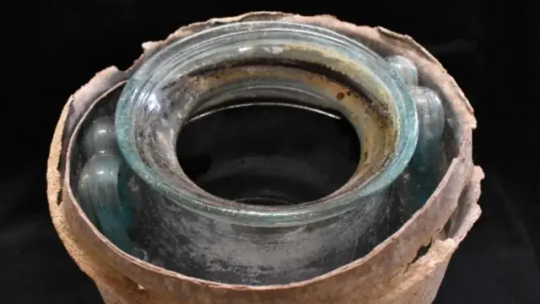
Oldest Wine Ever Discovered in Liquid Form Found in Untouched Roman Tomb
A 2,000-year-old Roman funerary urn unearthed in southern Spain has been shown to contain the oldest wine ever found still in liquid form.
Discovered during home renovations at a property in Carmona in 2019, the contents of the urn were analyzed by a team of scientists from the University of Cordoba in a study published Monday.
Study lead author José Rafael Ruiz Arrebola, a professor of organic chemistry at the university, said that the urn was found to contain cremated remains, burned ivory thought to come from a funeral pyre and around 4.5 liters (1.2 gallons) of reddish liquid.
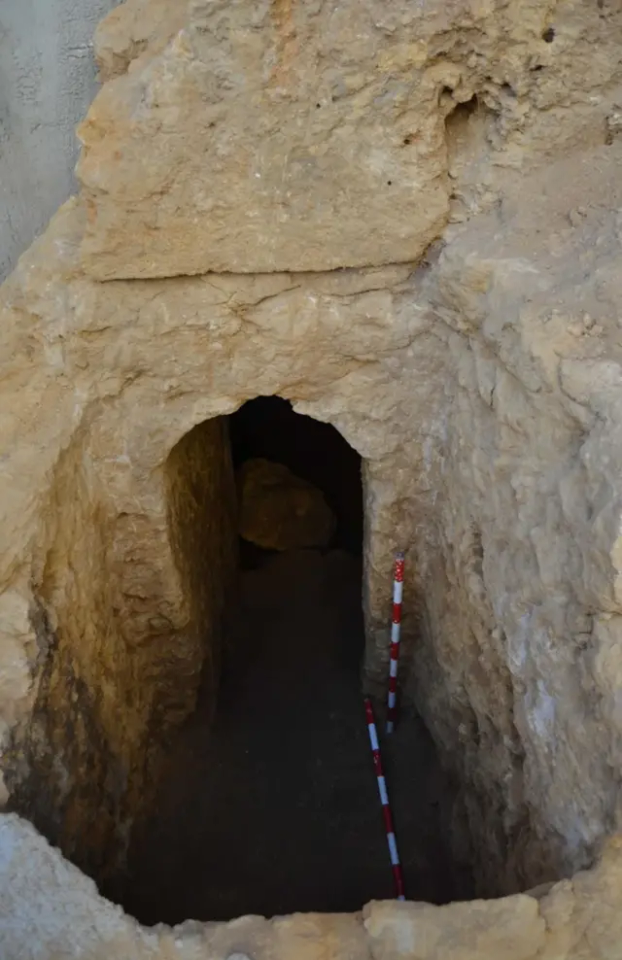
“When the archaeologists opened the urn we almost froze,” he said. “It was very surprising.”
The team then carried out a chemical analysis of the liquid and found that it was wine.
This was a big surprise, because wine normally evaporates quickly and is chemically unstable, Ruiz Arrebola said.
“This means it is almost impossible to find what we have found,” he said, explaining that the wine had been preserved by a hermetic seal that prevented it from evaporating, but it is not clear how the seal formed.

Further chemical analysis allowed the team to identify the liquid as a white wine, as it didn’t contain syringic acid, a substance only present in red wines, Ruiz Arrebola said.
It also has a similar mineral salt composition to the fino wines produced today in the region, he added.
“It’s something unique,” said Ruiz Arrebola. “We have been lucky to find it and analyze it – it’s something you only see once in your life.”
The researchers believe their discovery dethrones the current holder of the record for oldest wine in a liquid state, the Speyer wine bottle, found in Germany, which is thought to be around 1,700 years old. However, the age of the Speyer bottle has not been confirmed by chemical analysis.

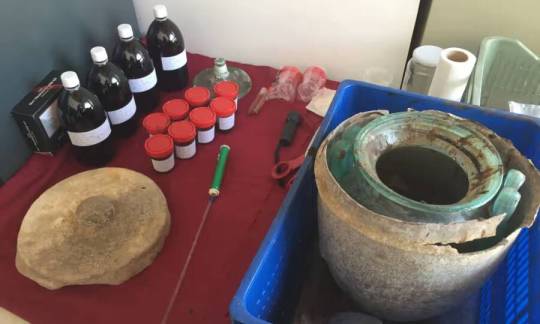
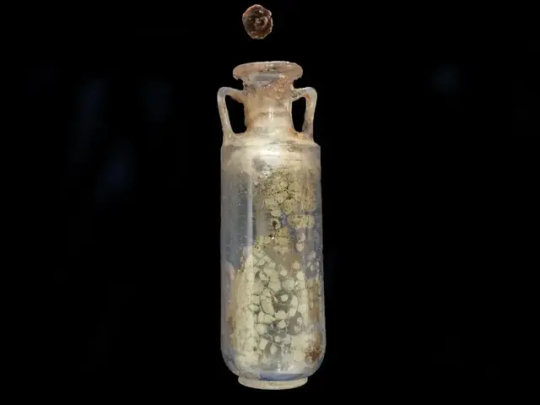
The vessel was one of six funerary urns containing remains found in the mausoleum.
The discovery of a gold ring and other valuable artifacts suggest it was built by a family of considerable wealth, Ruiz Arrebola said.
However, little else is known about their lives, because cremation would have destroyed any DNA, he explained, adding that this means it is impossible to say whether the six people were related.
Ruiz Arrebola now plans to try to work out which modern-day local wine it was most similar to, although there are hundreds to work through.
By Jack Guy.
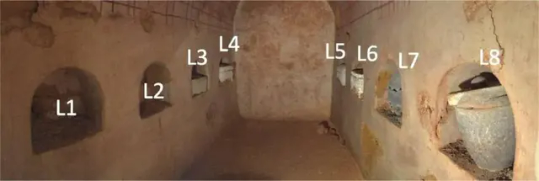
#Oldest Wine Ever Discovered in Liquid Form Found in Untouched Roman Tomb#Carmona Spain#ancient tomb#ancient grave#ancient mausoleum#ancient artifacts#archeology#archeolgst#history#history news#ancient history#ancient culture#ancient civilizations#roman history#roman empire
2K notes
·
View notes
Text

Mosaic covered alcove.
Mausoleum of Galla Placidia. 5th century
Ravenna
Jan 2017
#Mausoleum of Galla Placidia#mosaic#late antiquity#ancient rome#ancient roman#roman architecture#original photography#italy#italia#ravenna#photography#travel#photographers on tumblr#lensblr#architecture#historical architecture#church#mausoleum#ancient art#early christianity#religious architecture#religious art#religious imagery#wanderingjana
183 notes
·
View notes
Text



The Burrow Carvings, Lancaster City Museum, Lancaster
Group of carved stones, probably part of a third century mausoleum, temple or shrine.
This group, which is unique in this country, was found during the building of the canal south of Lancaster, near Burrow Heights, in 1794, The main Roman road into Lancaster passed close by.
The heads may represent the four winds or the four seasons and the standing figure (not shown) the deceased. The lions (one shown) are similar to a group of lions and stags from a shrine at Shorden Brae in Northumberland.
#Roman#roman mausoleum#tomb#roman road#roman city#roman britain#roman army#roman carving#roman sculpture#roman beliefs#ancient living#ancient crafts#ancient cultures#Lancaster
61 notes
·
View notes
Text

This is one of the only terracotta warriors that was found almost completely intact.
Note the detail on the bottom of his shoe, showing that grip and traction were considered in footwear even 2,200 years ago.
Each life-sized clay warrior was crafted to be completely unique and there are no two terracotta warriors-among the 8,000 total—that are exactly the same.
Shortly after the completion of the tomb in 210-209 BC, it was looted for weapons and burned, causing the roof to collapse, crushing the terracotta warriors.
All the other terracotta warriors that are currently on display were painstakingly restored.
What's even more remarkable is that the terracotta warriors were originally painted in bright colors by skilled artisans.
Unfortunately, when they were exposed to air and sunlight during the excavation in the 1970s, the colors began to curl up almost immediately and disappeared within minutes.
These terracotta warriors were put in place to guard the tomb of the first emperor of unified China — Qin Shi Huang (18 February 259 BC – 12 July 210 BC).
To this day, the tomb has yet to be opened.
According to ancient historians, the tomb contains an entire kingdom and palace in which the ceilings are decorated with pearls to mimic the night sky.
The tomb is also said to contain extremely rare artifacts and has been rigged with crossbows to shoot anyone trying to break in.
To keep its location a secret, the workers were entombed with the emperor.
As described by Han dynasty historian Sima Qian (145-90 BCE) in the Records of the Grand Historian, he mentioned that inside the tomb, "mercury was used to fashion the hundred rivers, the Yellow River and the Yangtze River, and the seas in such a way that they flowed."
Modern tests have indicated extremely high levels of mercury in the surrounding soil.
#Qin Shi Huang#terracotta warriors#Qin Dynasty#China’s First Emperor#clay warrior#Terracotta Army#Mausoleum of the First Qin Emperor#funerary art#Ancient Chinese Warfare#military power#terracotta sculptures#Shaanxi#China
161 notes
·
View notes
Text


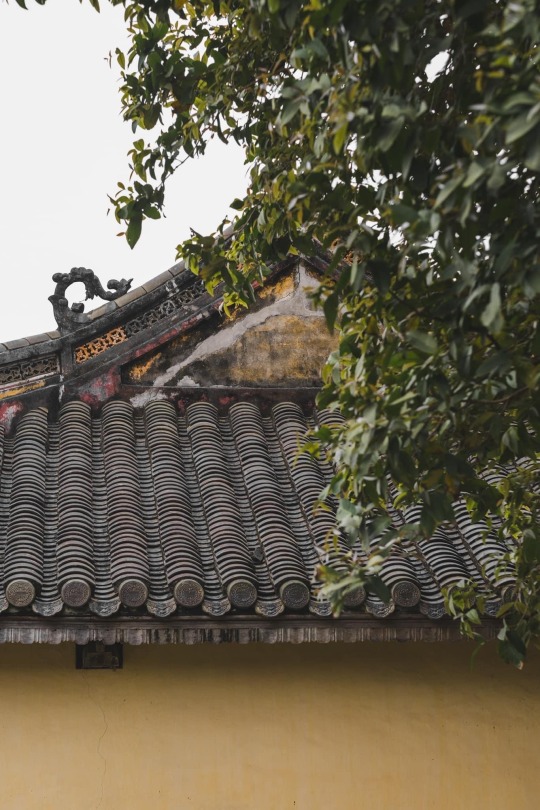
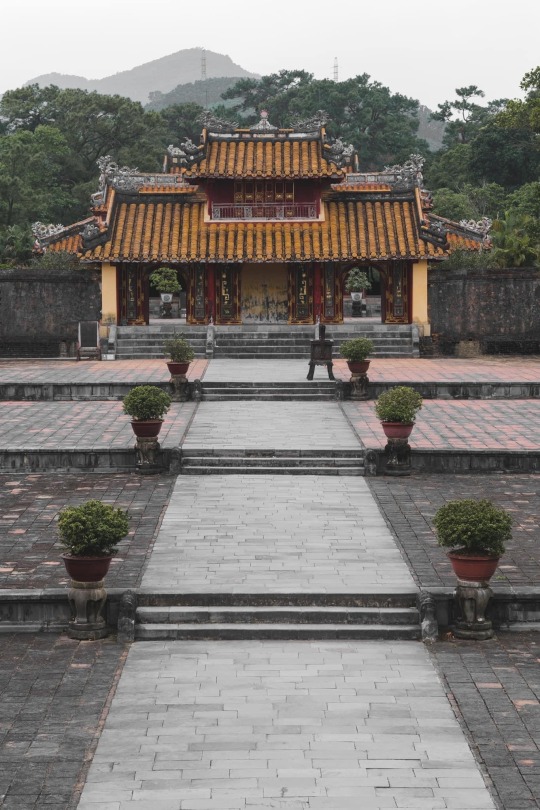


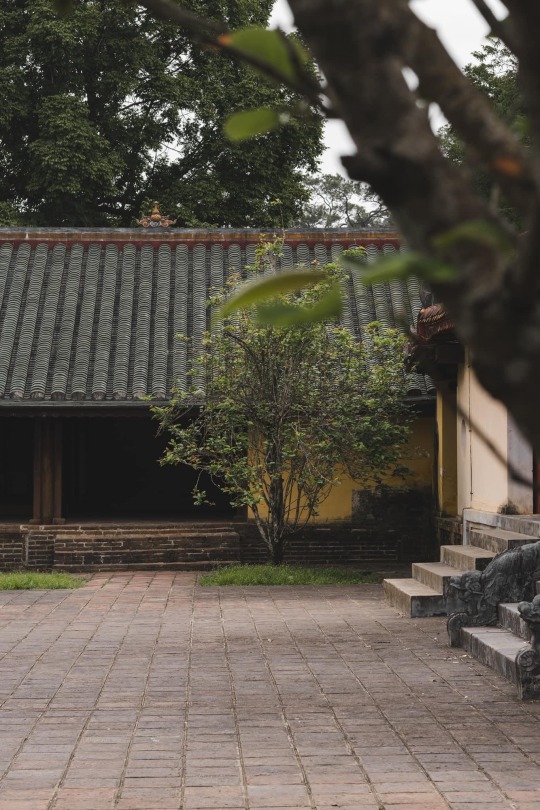
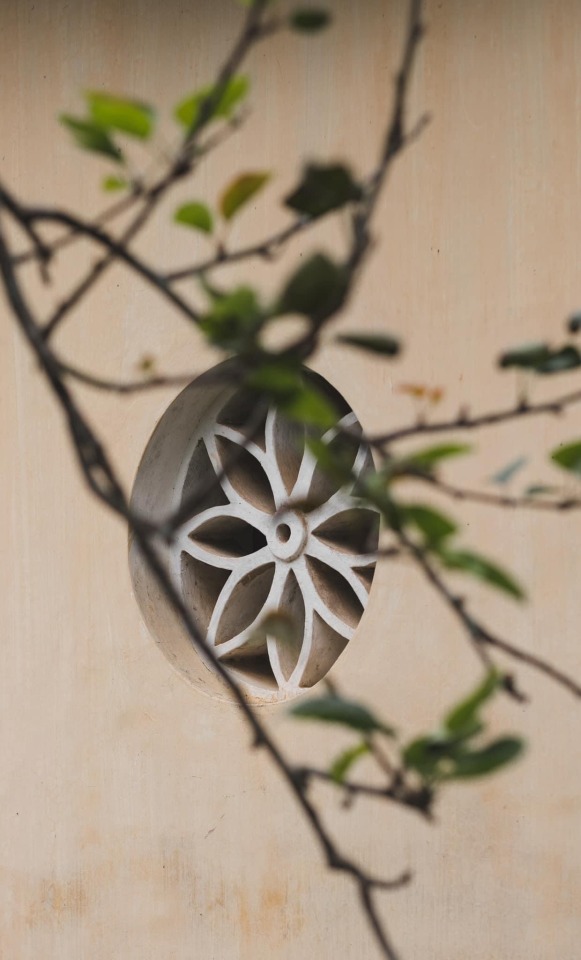

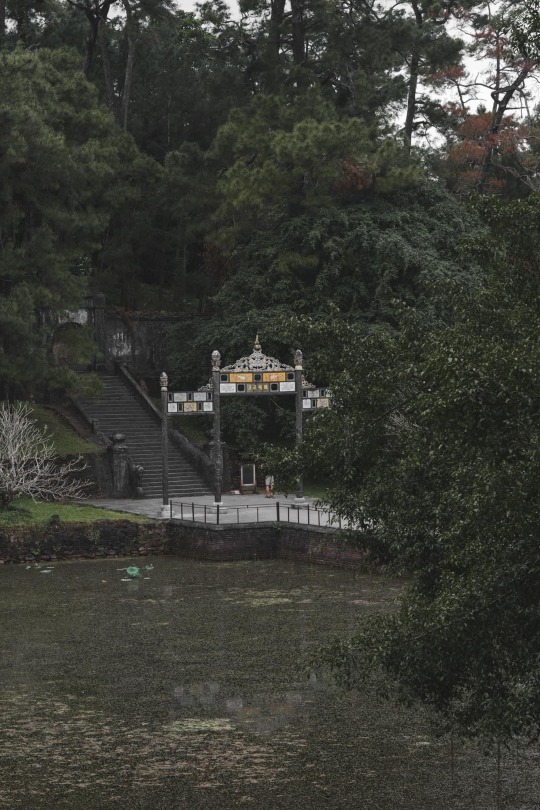
Emperor Minh Mạng’s mausoleum. Credit to Dong Ho Vy.
#vietnam#vietnamese#culture#history#sinosphere#travel destinations#travel#visit vietnam#hue vietnam#mausoleum#architecture photography#asian architecture#traditional architecture#ancient architecture#architecture
307 notes
·
View notes
Text
one of the things mourn watch rook has the most comments about/seems pretty knowledgeable about when they're there is the way the necropolis will just shuffle rooms around every now and then on a whim, so I'm headcanoning that rye's previous area of expertise, outside of general watcher duties, was keeping track of and rediscovering these lost or displaced areas. that, and basically acting as a sort of tour guide when need be, such as on the day they met varric.
'have we really misplaced the ashen cathedral again? *sigh* that's the third time this year, we really must strengthen the wards. oh well. someone send for ingellvar, they'll track it down in no time I'm sure. and it might keep them out of trouble for a while'
#rye's mourn watch dwarf father figure was responsible for maintaining and securing the buildings and structures of the necropolis#not quite in the top leadership of the construction side of the watchers but pretty high up there#so it makes a lot of sense to me that way too they've been to more sections of the necropolis than even most watchers go#and know the buildings and structures very well#rye would just like. set out alone for a week track down a missing mausoleum and nod in satisfaction as he updated the maps haha#this instinct for isolation and disappearing into the immense ancient silence shared only by the dead and the weight of his own grief#had no long term effects on his psychological development. of course. literally don't even worry about it he's fine :)#'I go on short hectic jaunts into the world of the living. and then I come back here and it's quiet once it becomes too much to bear#I think that's what they call work life balance or something' (it's not)#dragon age#dragon age: the veilguard#dragon age: the veilguard spoilers#dragon age spoilers#oc: Ellaryen Ingellvar
21 notes
·
View notes
Text
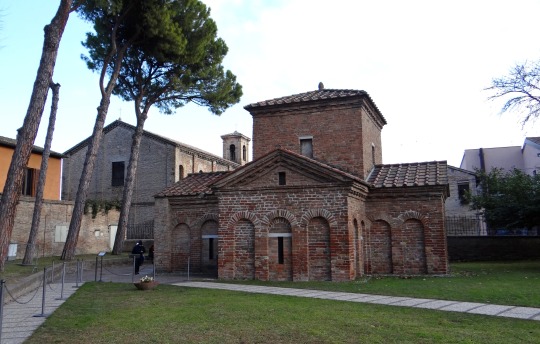

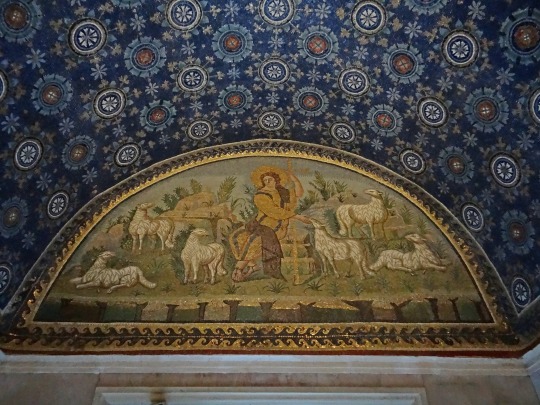
The Mausoleum of Galla Placidia, built in 5th century. It is thought to contain the tomb of Galla Placidia (died 450), the daughter of the Roman Emperor Theodosius I. Someone accidentally burned the contents of the tomb in 1577. Emperor Valentinian III or Emperor Honorius and Galla’s husband Emperor Constantius III may still be buried in the tomb. Ravenna, Italy
#ancient rome#ravenna#italy#italia#mausoleum#tomb#ancient art#mosaics#original photography#photography#taphophile#taphophilia#lensblr#photographers on tumblr#ancient history#galla placidia#archaeology#wanderingjana
104 notes
·
View notes
Text
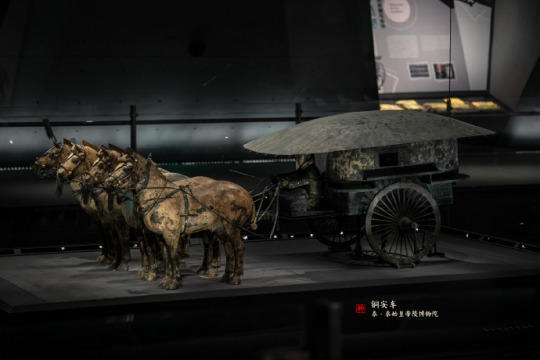
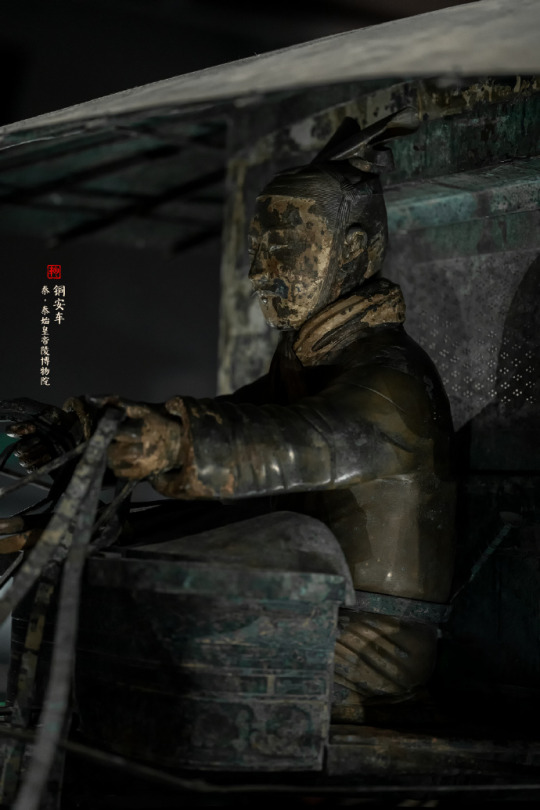
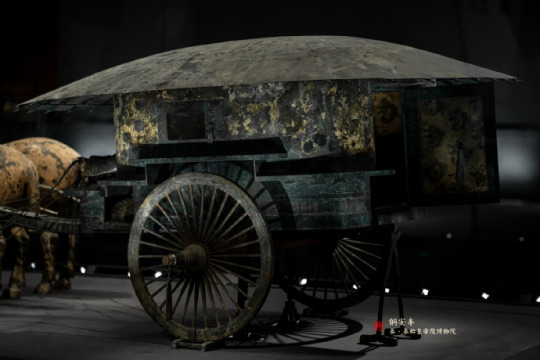




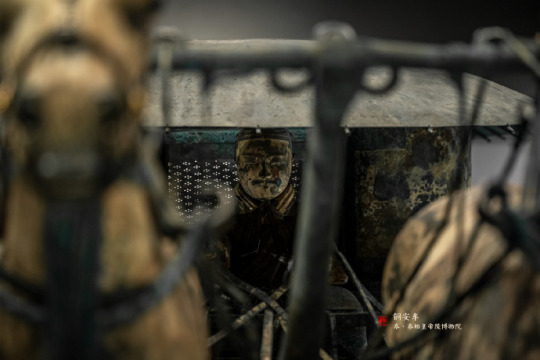

Canopy Chariot From The Emperor Qinshihuang Mausoleum
Qin dynasty chariot, unearthed from the burial pit on the west side of the Qinshihuang Mausoleum (秦始皇陵) in Lintong, Shaanxi.
The life-size painted chariot is 317 cm long and 106.2 cm high. Exhibited in the Emperor Qinshihuang's Mausoleum Site Museum (秦世皇黃陵博物院).
Vintage photos of the excavation and restoration:

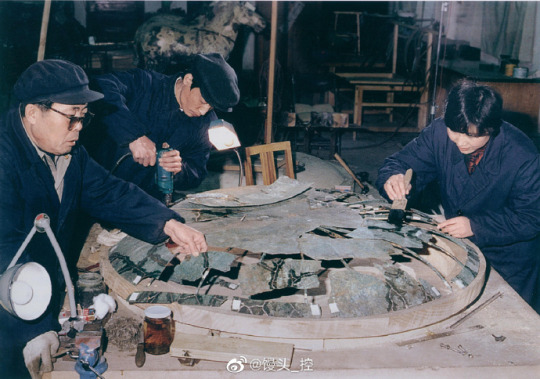
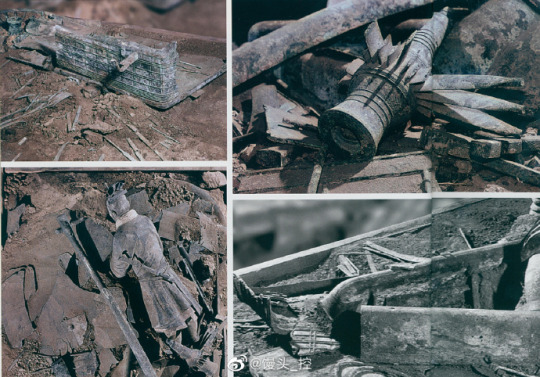
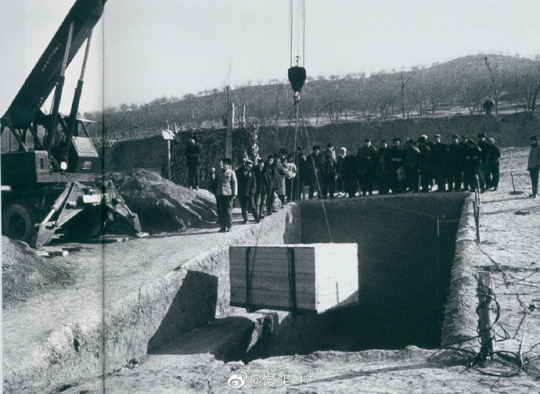

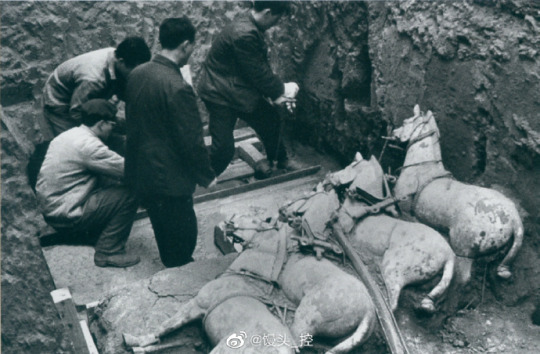
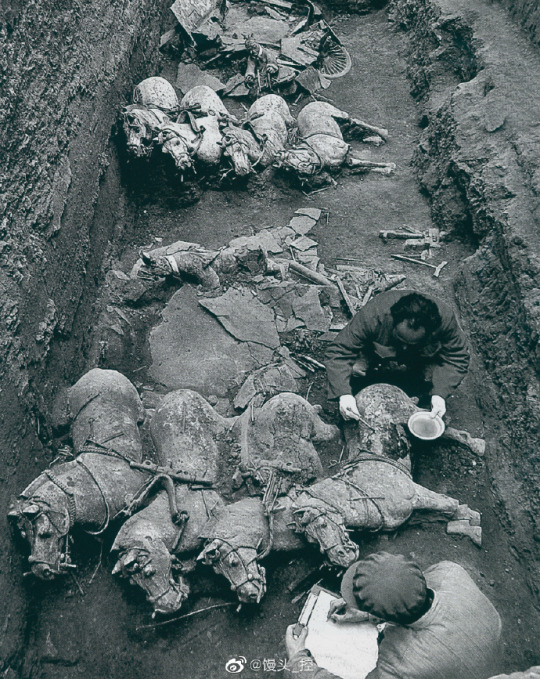
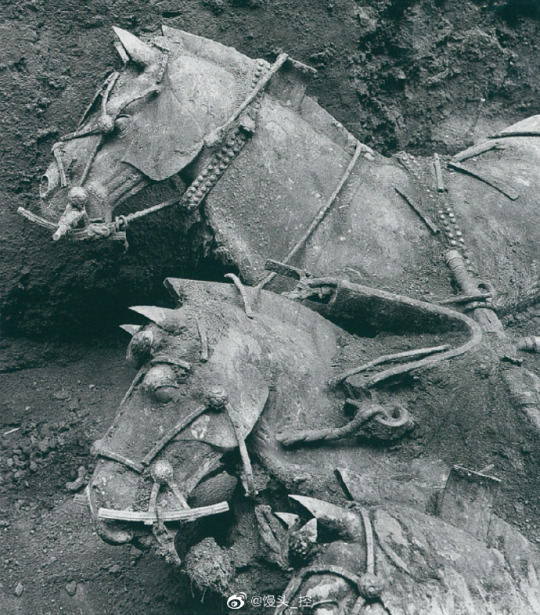
#ancient china#chinese culture#chinese art#chinese history#qin shi huang#chariot#qin dynasty#ancient tomb#archeology#chinese warfare#Terracotta Army#terracotta#mausoleum#tomb art#charioteer
69 notes
·
View notes
Text
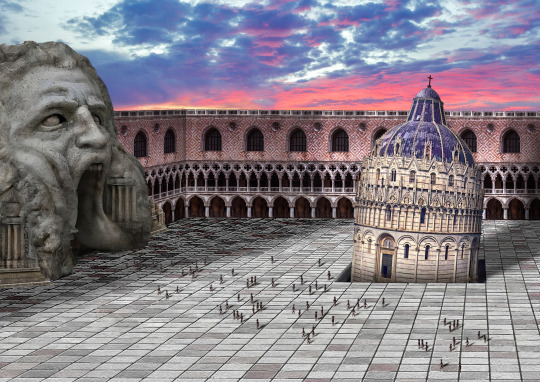
This dream reminded me of Venice, or some other italian place, a grand plaza with a gigantic stone head with an archway, and a leaning building like a church or a baptistry. It felt like I was on vacation.
#statue#digitalart#architecture#ancient#baptistry#classicalarchitecture#fantasy#landscape#mausoleum#mystery#photomanipulation#temple#venice#vision#dreamdiary#esotericart
5 notes
·
View notes
Text





Nemrut Daği Türkiye
Seagull Color expired in 1990
#35mm#film photography#photographers on tumblr#seagull 100#seagul color#expired film#nemrut dağı#nemrut dagi#mount nemrut#turkiye#türkiye#ancient archeology#king antiochus i#mausoleum#tumulus#taurus mountains#zoroastrianism#archaeology#adıyaman
3 notes
·
View notes
Photo
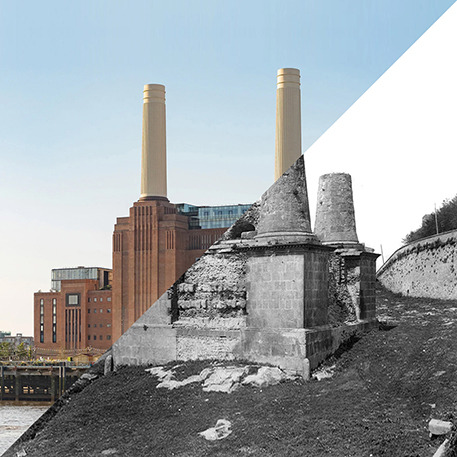
Giles Gilbert Scott and J. Theo Halliday, Battersea Power Station, London, UK, 1929 -1955 (redevelopment by WilkinsonEyre) ph. Peter Landers VS Tomb of the Horatii and Curiatii, Albano Laziale, Italy, 1st century BC
#via appia antica#via appia#archaeology#ancient rome#rome#roma#roman empire#roman republic#Horatii And Curiatii#albani laziale#tomb#Mausoleum#london#thames#Giles Gilbert Scott#Battersea Power Station#architecture#archdaily#archidaily#archiporn#archilovers#WilkinsonEyre
59 notes
·
View notes
Text

Archaeologists Find Statue of the Roman Sea God Triton in Mausoleum
Archaeologists have uncovered a Roman Statue of Triton during excavations in preparation for a housing development in Kent, England.
Archaeologists from the Canterbury Archaeological Trust (CAT) have discovered artifacts, including a mausoleum which is to be buried within a roundabout, which are more than 1,700 years old during an investigative dig related to a new housing development close to London Road in Teynham.
Robert Masefield, Director for RPS, said: “We expected interesting Roman archaeology, perhaps a cemetery, but the finds including the lively and unique statue of a Triton and the mausoleum remains have by far exceeded that. These finds are now part of Teynham’s local legacy and the nations rich Roman story. Further study will place the findings in their full historical context.”
The area, which is being built on by Moat Homes and Chartway Partnerships Group for its Frognal Lane development, follows the ancient Roman Watling Street and during an initial site evaluation, fragments of chalk wall foundations and Roman cremation burials were discovered. As a result, Swale Council, with advice from Kent County Council Heritage Conservation, required a 0.5-hectare archaeological excavation at the site.

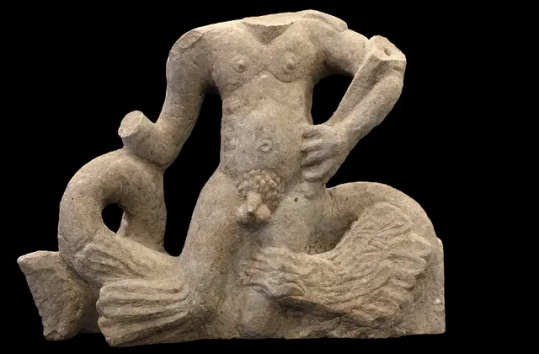

The Canterbury Archaeological Trust (CAT) was tasked with leading the dig, which revealed elements of a 30m square walled enclosure surrounding a c.7m square structure. Further excavations revealed that the structure is a Roman mausoleum containing a Roman coin dating from around 320 to 330 AD. The site also included Roman, and possibly later, burials with various grave goods.
However, the highlight of the findings was the discovery of a stone statue, representing the sea god Triton.
The Triton statue is substantial, appropriately 70cm (27.5 inches tall) and 70cm wide. It weighs more than 132lb (60kg). Archaeologists did not need to dig far. It was only 1.3 feet (40cm) below ground.
In Roman mythology, Triton was the son of Neptune, the god of the sea. The unique stone statue depicts Triton – a merman with the torso of a man and the tail of a fish – riding on a sea monster.
As a demi-god, he could calm the waves by blowing on his conch shell, which he appears to be holding in the uncovered sculpture. That part has been broken off, but the artifact is otherwise in incredible condition. It was carved between the late first century and second century AD.
Dr. Richard Hobbs, senior curator of Roman Britain at the British Museum, told MailOnline it is ‘spectacular’.
He said that, although a few fragments of Triton sculptures are known from Roman Britain, ‘nothing quite like this has been discovered before’.
Excavations are continuing at the site.
By Leman Altuntaş.
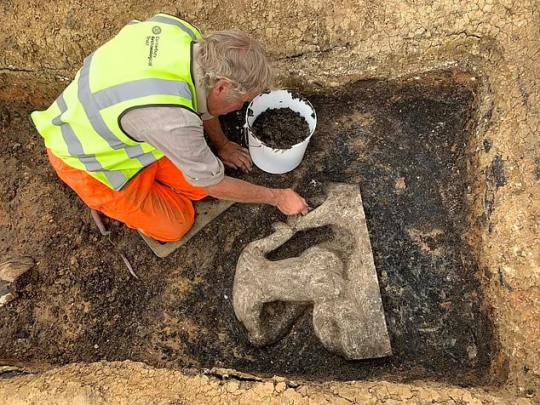
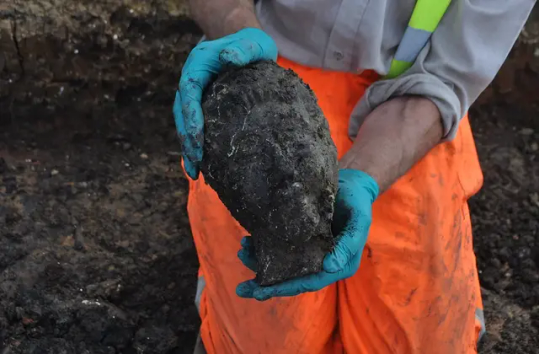

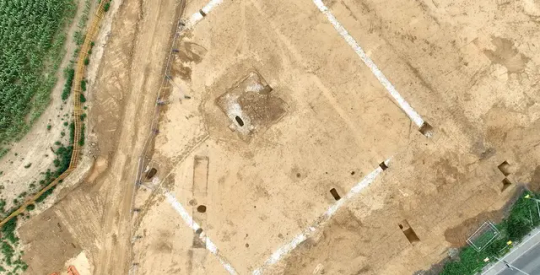
#Archaeologists Find Statue of the Roman Sea God Triton in Mausoleum#Kent England#The Canterbury Archaeological Trust#stone statue#roman statue#ancient tomb#ancient grave#ancient mausoleum#ancient artifacts#archeology#archeolgst#history#history news#ancient history#ancient culture#ancient civilizations#roman history#roman empire#roman art
221 notes
·
View notes
Text
The Tomb of the Plautii

When I first started researching and writing about the Plautii, I found this print by Piranesi of their mausoleum near Tivoli - and as I was searching for more art showing better views, I near jumped out of my skin because unbelievably, it's still standing.
I was really lucky to be able to visit in 2019 (on my honeymoon), and while it was covered in scaffolding at the time, it was such a powerful moment. knowing that I was standing where at least some of the people I was writing about had actually stood gave me chills.



What an experience.
The tomb once contained Marcus Plautius Silvanus, his wife Lartia, and their children - Plautia Urgulanilla, Aulus Plautius Urgulanius and Publius Plautius Pulcher.
Notably, his *very* disgraced son, another Marcus Plautius Silvanus, isn't interred here.
The family hailed from nearby (ancient) Trebula Suffenas - modern Ciciliano.
31 notes
·
View notes
Photo
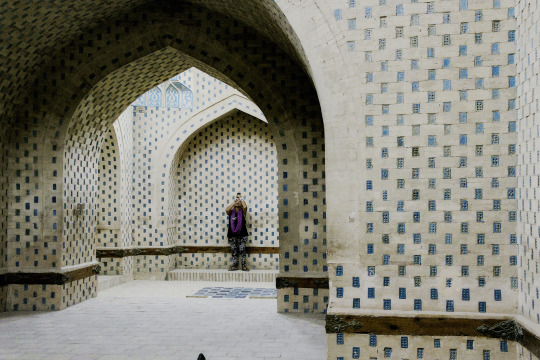
Giulia taking a picture - Mazlumkhan-sulu mausoleum (XII-XIV c.), Mizdarkhan necropolis, 2022
#picofthenight#travel#uzbekistan#original photographers#photographers on tumblr#ancient architecture#islamic architecture#mausoleum#archs#architecture#photoofthenight#friends
34 notes
·
View notes
Text
Nice find - unusual.
8 notes
·
View notes
Text
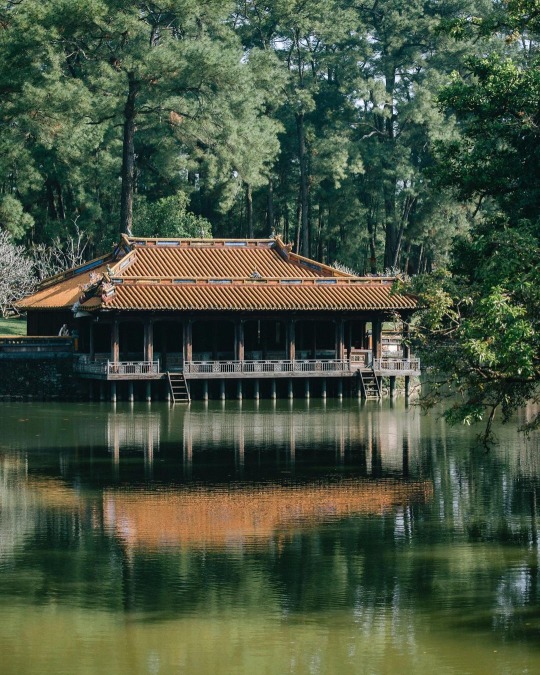


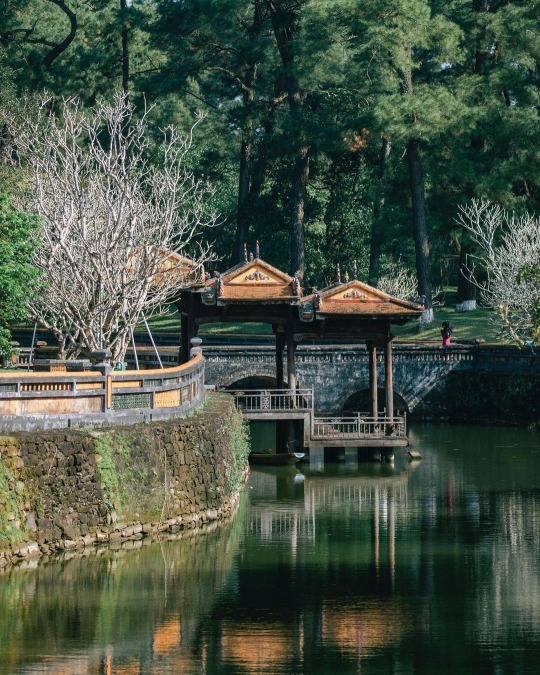
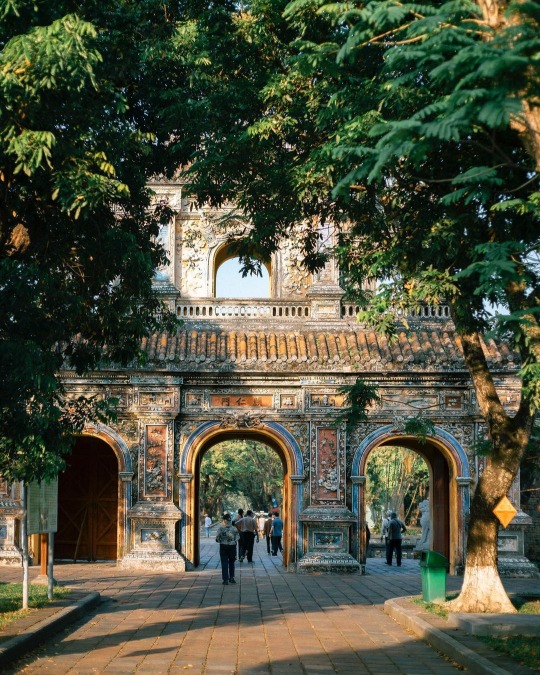
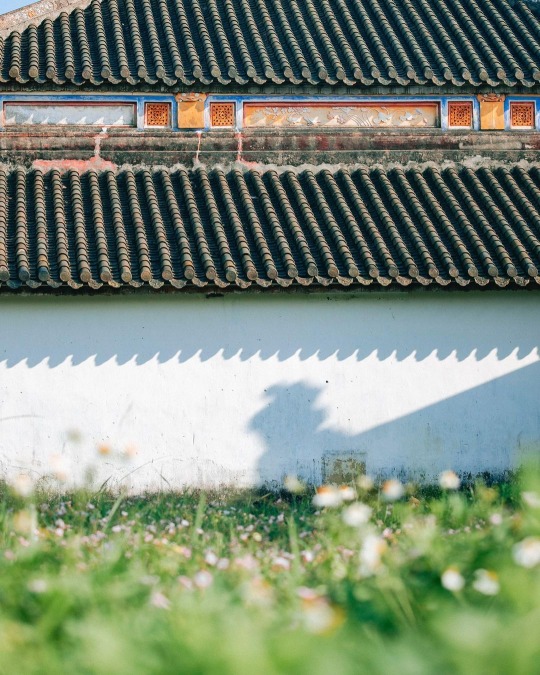
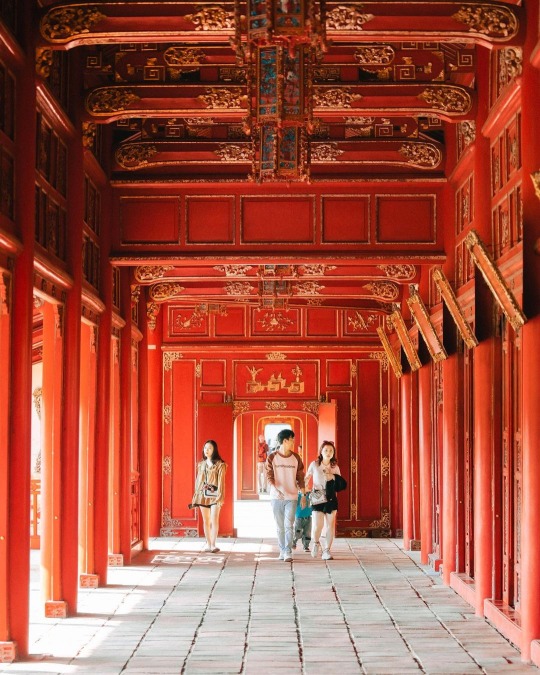
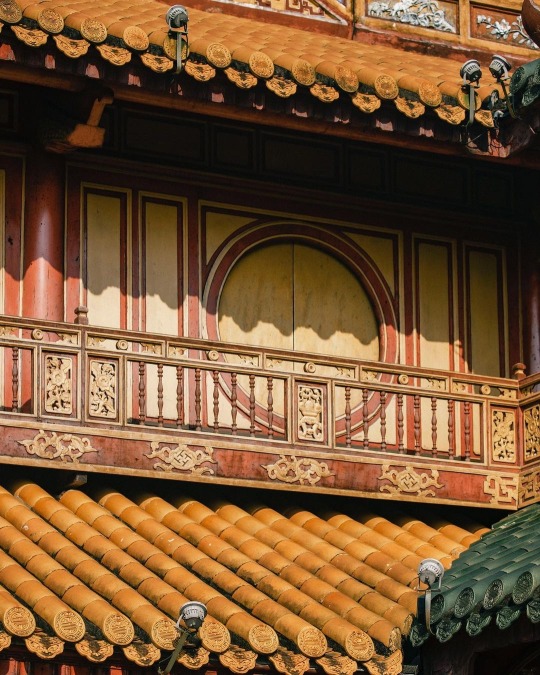
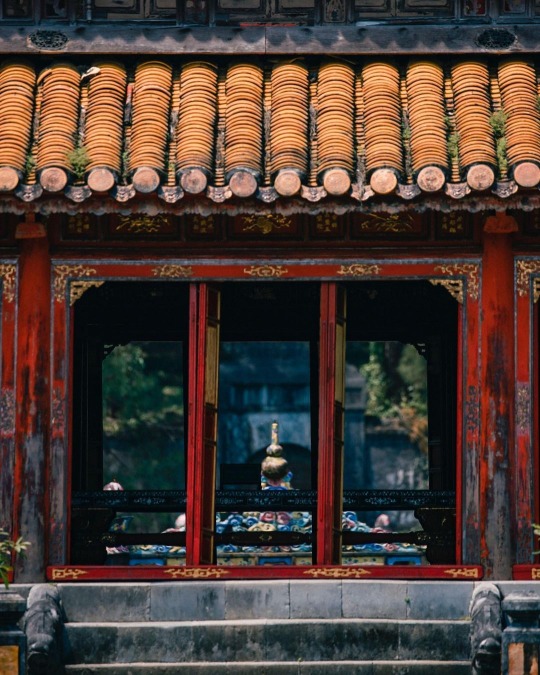
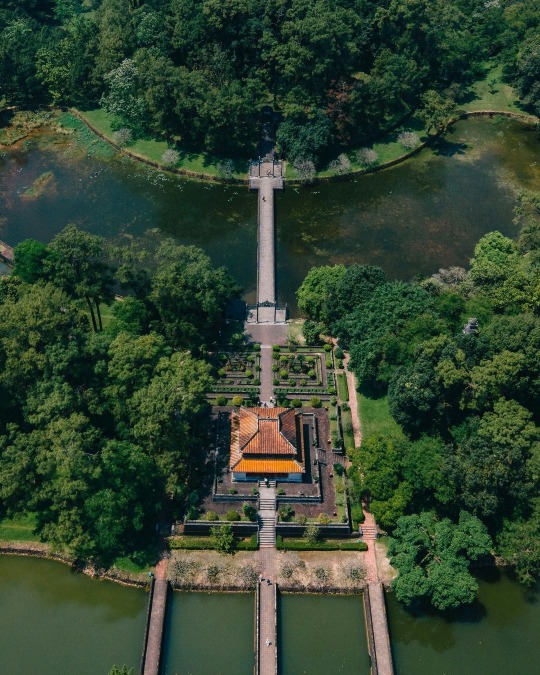
Huế, Vietnam. Credit to _im.rot_ (Instagram).
#vietnam#vietnamese#culture#history#sinosphere#hue vietnam#traditional architecture#asian architecture#architecture#architecture photography#ancient architecture#capital city#mausoleum#forbidden city#palace#palaces#koi fish#pavilion#decoration#balcony#tile roof#aerial#drone shots#visit vietnam#traveller#travelgram#travel pics#travel#travel destinations#beautiful places
224 notes
·
View notes